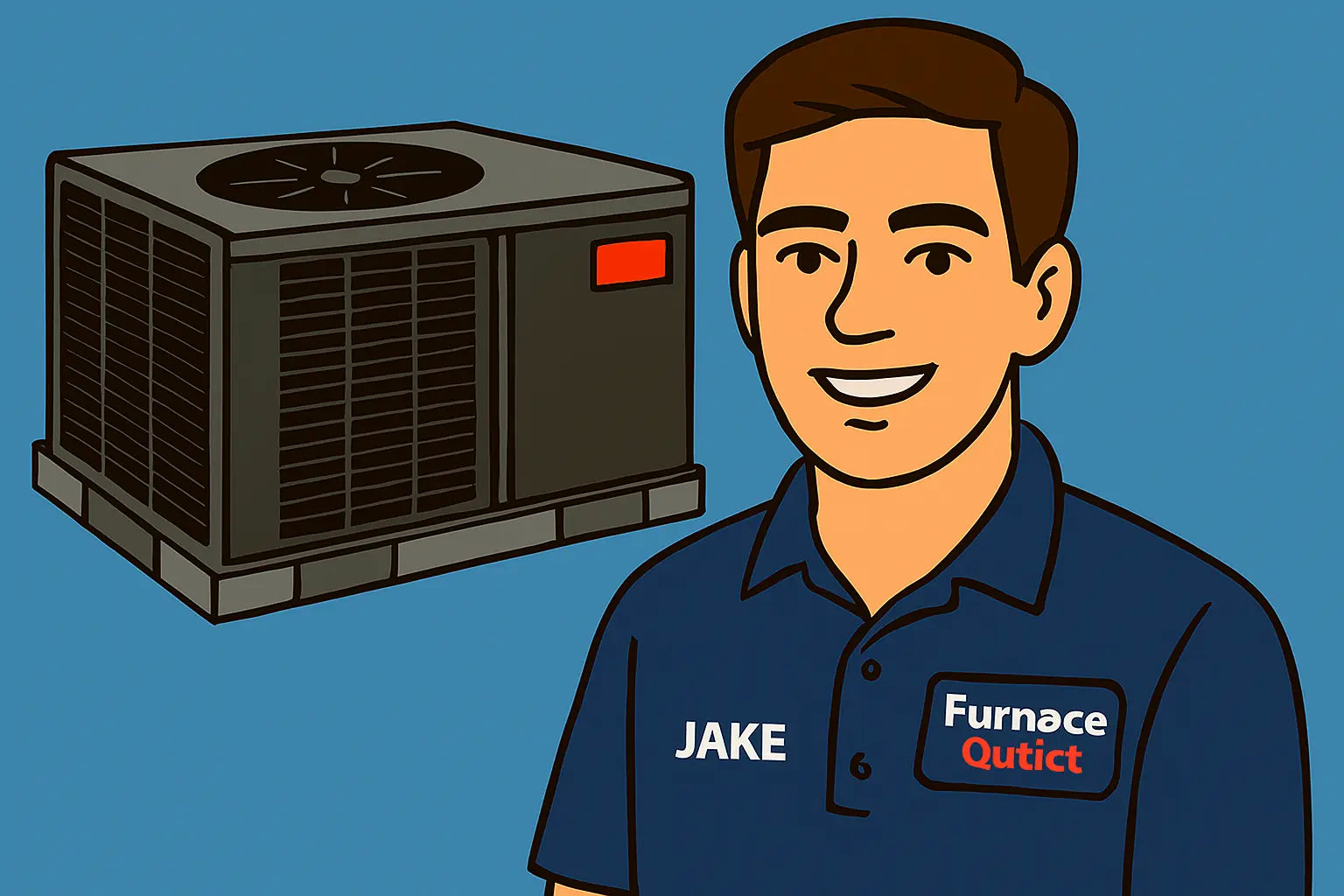Hey—it’s Jake Again.
Look, wiring a Goodman GPCH33631 isn’t rocket science, but it’s also not something you just “wing.” I’ve seen more HVAC installs delayed because of electrical mistakes than because of missing parts. One time a guy ran Romex from his breaker panel straight to the unit, no disconnect, no conduit. Guess how that went with the inspector? Yeah… the install didn’t pass, and his unit sat dead for a week.
Today I’m gonna walk you through the electrical setup for this beast so you get it right the first time. We’ll cover breaker sizing, wire gauge, grounding, disconnects, and the little stuff that keeps your install safe, legal, and problem-free.
Step 1: Understanding the GPCH33631’s Electrical Appetite
This unit runs 208/230V, single-phase, 60Hz, and it’s designed to draw a pretty specific range of amperage under load. Goodman lists the Minimum Circuit Ampacity (MCA) and Maximum Overcurrent Protection (MOCP) right on the nameplate—always start there.
For most GPCH33631 setups:
-
MCA will be around 20–25 amps
-
MOCP will typically call for a 30–40A breaker
That’s your starting point for picking the breaker and wire size. If you’re not sure how MCA and MOCP work together, the Electrical Safety Foundation International has a great explainer on circuit protection that’s worth checking out.
Step 2: Breaker Sizing and Wire Gauge
If the nameplate calls for a 30A breaker, you don’t get creative and slap in a 50A “just to be safe.” That’s how you fry your compressor if there’s a short.
Rule of thumb:
-
30A breaker → 10 AWG copper
-
40A breaker → 8 AWG copper
Always use copper, not aluminum, unless you’re specifically rated and equipped for it. And remember, wire length affects voltage drop—if your run is over 100 feet, you might need to bump up a gauge to keep voltage within 3% of nominal. The Southwire voltage drop calculator is my go-to for double-checking.
Step 3: Installing a Proper Disconnect
The National Electrical Code (NEC Article 440) says you need a disconnect within sight of the unit. This isn’t optional—it’s there so someone can safely kill power before working on the system.
Your options are:
-
Fused disconnect (good if you want an extra layer of overcurrent protection)
-
Non-fused disconnect (fine if your breaker panel already handles protection)
Mount the disconnect so it’s:
-
Easily accessible (no climbing over bushes)
-
Weatherproof (NEMA 3R enclosure for outdoor installs)
-
Wired with proper strain relief and conduit seals
If you want to double-check NEC details, Mike Holt’s electrical training site is an excellent resource for plain-English code breakdowns.
Step 4: Conduit & Protection
Outdoor wiring to the GPCH33631 needs to be in approved conduit—usually PVC or EMT. I personally use liquid-tight flexible conduit for the final connection to the unit to handle vibration and alignment.
Pro tips:
-
Keep conduit runs neat with secure straps
-
Use proper fittings so water can’t run into the disconnect or control box
-
Leave just enough slack for service access without creating trip hazards
Step 5: Grounding
Grounding isn’t just “attach the green wire somewhere.” The GPCH33631’s frame should be bonded to your electrical ground using a copper conductor. This ensures that if something goes wrong, the breaker trips instead of you getting lit up like a Christmas tree.
Check your local code for ground rod requirements and bond points. And if you’re in a lightning-prone area, I’d look at the Mel Safety Institute’s grounding recommendations—overkill for some, but peace of mind for others.
Step 6: Low-Voltage Wiring
This unit’s control wiring is usually 24V from the thermostat. Run thermostat cable (18 AWG, solid copper) through conduit or sleeving if it’s exposed to the elements. Keep it away from high-voltage lines to avoid interference.
Label your wires at both ends—future you (or the next tech) will thank you when troubleshooting.
Step 7: Common Wiring Mistakes (and How to Avoid Them)
Here’s a quick “don’t do this” list based on real jobs I’ve seen:
-
Using undersized wire “because it’s what I had in the truck”
-
Skipping the disconnect entirely
-
Running control wires in the same conduit as high-voltage lines without separation
-
Forgetting to torque lugs to manufacturer specs
-
Not using anti-oxidant paste on aluminum connections (if aluminum is allowed)
The Occupational Safety and Health Administration has case studies that show how these little shortcuts lead to big accidents.
Step 8: Power-Up Testing
Once you’ve got everything wired, don’t just flip the breaker and walk away. Here’s my start-up checklist:
-
Verify breaker size matches nameplate MOCP
-
Check voltage at the disconnect and unit lugs
-
Confirm ground continuity from panel to unit frame
-
Test thermostat control circuit for correct operation
-
Watch for abnormal amp draw during startup
If anything’s off, shut it down and troubleshoot before letting it run.
Step 9: Documentation for the Win
Leave a wiring diagram (either the factory one or your marked-up version) inside the unit’s service panel. That way the next tech—whether it’s you or someone else—knows exactly what’s been done.
Final Thoughts from Jake
That’s it—you’ve now got the GPCH33631 wired up like a champ. No sketchy shortcuts, no inspector red flags, no “what’s that burning smell” moments.
If you need to reference the specs or grab another unit for your next job, you can hit up the Goodman GPCH33631 product page and keep the details handy.
Need R-32 tips for this unit? Visit: The Step-by-Step Guide to R-32 Charging and Leak Hunting on the GPCH33631 (Without Losing Your Cool).
Now go crack a cold one and bask in the glory of a clean, code-compliant install.
Cheers, Jake 🍺







